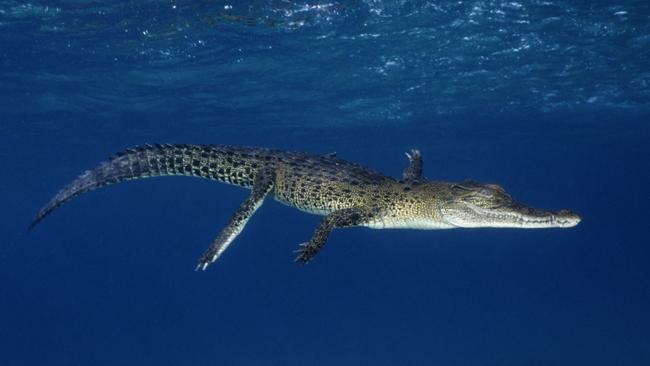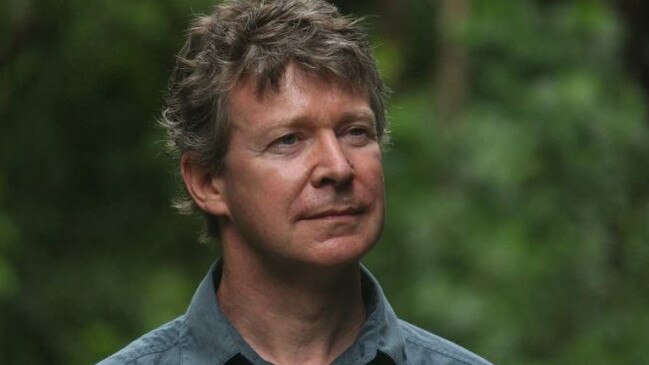Croc researcher Dr Adam Britton trashes theory of NT crocs causing surge in Timor Leste attacks
There is no solid evidence to support the hypothesis that enough NT crocodiles are migrating to Timor Leste to have a significant impact on the explosion in attacks, says researcher Dr Adam Britton
Alice Springs
Don't miss out on the headlines from Alice Springs. Followed categories will be added to My News.
NORTHERN Territory’s saltwater crocodiles are being made “scapegoats” amid an explosion in human attacks on Timorese shores, a leading Top End crocodile expert has warned.
Dr Adam Britton said there’s no solid evidence to support the talked up idea that enough crocodiles are making the 450km swim from Top End waters to the island nation of Timor Leste to have a significant impact on the number of people being killed by crocodiles.
“It’s very frustrating seeing this idea being put forward as something serious,” Dr Britton said. “There’s no doubt that crocodile attacks have been increasing, but the causes behind that is not always as simple as it seems.
“But as to whether there are so many crocodiles moving from Australia to Timor Leste that they are responsible in a large part for the increase in the attacks there – that’s something that there’s no evidence to support.”

In the past two decades, the Southeast Asian nation of Timor Leste has witnessed a more than 20-fold increase in croc attacks, with an average of more than one attack per month reported according to the most recent data. More than half of attacks have been fatal.
A team of scientists, headed by eminent croc researcher Professor Grahame Webb, carried out testing into the Australian crocodiles’ migration to far-flung shores.
The testing found no genetic link between homegrown Timorese crocs and those living in the Top End.
Professor Webb has said he still supported the idea, which relied on anecdotal evidence of a handful of wandering crocodiles sighted from oil rigs in the Timor Sea.
While Dr Britton acknowledged “the odd crocodile” may occasionally journey into Timorese waters, he said blaming NT crocodiles for the foreign attacks was not sensible.

“The simple explanation is usually the one that’s correct,” he said.
“And that is that there are plenty of saltwater crocodiles that are resident in Timor Leste, and in Indonesia and West Timor, for example. The crocodile populations in all of these countries and provinces are constantly growing and they are also moving between different countries and along coastlines.
“There are also more people around, so you have more people and more crocodiles and so the risk of attack is going to go up exponentially. And the other thing is a big factor in all of this, which often gets overlooked, is there’s a lot more reporting of crocodile attacks – when someone gets bitten by a crocodile, you can guarantee it will be on someone’s Facebook page in half an hour, whereas 15-20 years ago people didn’t have much access to that.”
Once on the brink of extinction, the NT saltwater crocodile population has soared in the past 50 years, with an estimated 100,000 crocs floating around the Territory.
But Dr Britton has warned that the Timor Leste hypothesis may lead authorities to conclude -wrongly - that culling the population or endorsing safari hunting is wise.
“Culling crocodiles here doesn’t solve the problem,” he said.
“It would reduce the number of crocodiles, but it doesn’t make it safe for people to go swimming and tidal rivers, because there’s still going to be a lot of crocodiles there.
“What’s been effective here has been education and awareness and safety management programs. That’s why we only have on average about one person killed a year in Australia, which is pretty good going when you think about it – considering how many crocodiles we have and how many people put themselves at risk.
“It’s one of the big differences between Australia and some of the other countries in saltwater crocodiles’ range – they see far more attacks than Australia does.”




